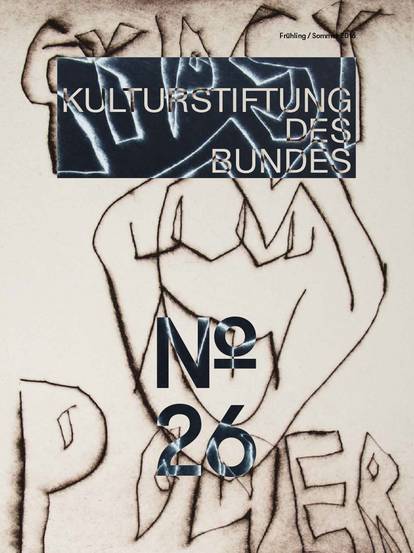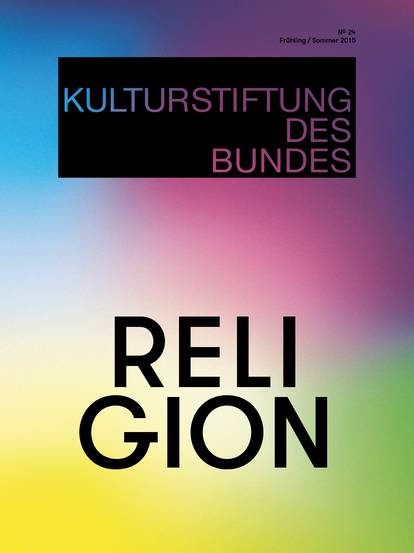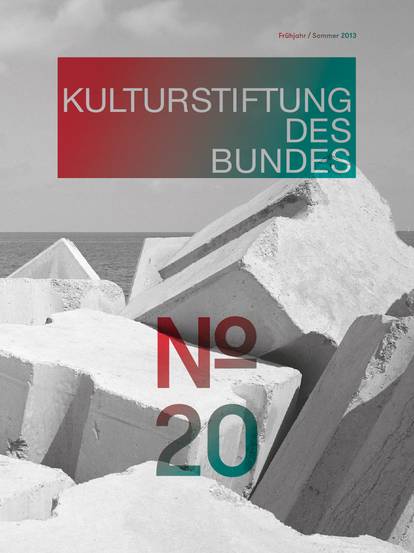The tragic and the comic.
What Büchner’s comedy “Leonce and Lena” has in common with “Woyzeck.”
Do you know Georg Büchner’s famous comedy “Woyzeck”? Then you must know his tragedy “Leonce and Lena.” If these questions don’t strike you as preposterous, then you probably aren’t familiar with either “Woyzeck” or “Leonce and Lena.” Yes, that was a joke. And yet: keep the thought in mind a little bit longer.
It seems easier to uncover the comic potential of Woyzeck than to recognize the underlying sense of tragedy in “Leonce and Lena.” Or is it the other way around? In his work “Laughter,” Henri Bergson writes that “above all, the comedy reflects the peculiar incapacity of people to adapt to society” and that in those instances when a person strives to be integrated into society, rigidity occurs. Society, however, does not like to see this rigidity; this is why laughter serves as a humbling adjustment – to re-integrate the rigid person. This theory reveals a peculiar, unfeeling togetherness which provides the first clue that the comic element should not be trivialized.
Admittedly, we are on shaky ground here, since a crude person can laugh about anything. This, however, should not serve as an argument. But does it help the unfortunate butt of the joke to know that I am not laughing because of but in spite of his misfortune? Comedy and horror “have some things in common despite all of their thoroughly contrary effects,” according to the Büchner Yearbook of 1983. “For example, the dissolution of reason in favour of the imagination. Comedy and horror converge in a physiological aesthetic of perception. In horror, as a pre-reflexive visceral sensation, the unsolved questions and abstract answers of philosophy are responded to with an immediate, concrete existential fear. In comedy, on the other hand, which extends from the pre-reflexive to the reflexive and which lives from the suddenness and unexpectedness of its appearance, philosophy becomes central.”
This is where the body, so difficult to read but with an undeniable power of judgment, comes into play, and moreover: fear as the counterpart of philosophy. Both laughter and the frightened scream are reflexive forms of expression which the theological philosopher Klaus Heinrich grasps as the real substance (of a ritual act). These convulsive movements independently demonstrate the existence of a psychosomatic reality – be it a cultic affect, an internal rift or an aesthetic experience – for visions of God and theatre derive from the same linguistic root: theoria. I laugh (degradation and adjustment) – about a vice that doesn’t move me, says Bergson, underlining once again that a lack of empathy can be a condition for amusement. Did Büchner wish that in the imaginary audience for his drama “Leonce and Lena,” which first premiered in 1895 in Munich, a community united by laughter would emerge, a cheerful or mocking alliance against his dallying aristocratic ne’er-do-wells?
Today, we can see that the elite work hard but often burn themselves out in fruitless industry, helpless in the face of the endlessly complex global interconnections of the marketplace – at least, that is how it is presented. Stock market activity as a Delphic Sybil, making hourly pronouncements and, in the fiery nucleus of the symbolic order, completely vapid – this is not entirely without its humorous side.
The comedy shows in exemplary fashion that the symbolic order, as we well know, can succeed even when it falters. The entire comedy attests to this – and laughs because of it. This means that laughter constitutes both recognition of the symbolic order and its undermining, which is why Baudelaire sees it as one of the artistic phenomena revealing people’s ambiguity; the ability to be oneself and, at the same time, someone else. “The ego that laughs instinctively, which tears apart the symbolic, is not the ego which observes and recognizes,” writes Julia Kristeva in “Revolution in Poetic Language.” But it still, at least, bears the features of the observing ego, for example in the way that Bergson describes laughter as the foam on the crest of the wave reproducing the uproar in the depths.
A kind of philosophical slapstick
Laughter, however, has to be translated back if it is to play a critical or epistemological role. At first, it floods our powers of judgment, it floods our entire epistemological apparatus. Gert Mattenklott describes this eruption into the ridiculous – and into total otherness – very eloquently. “This laughter comes from the middle of the body, a seemingly wild, impetuous, reflexive reaction to everything cultivated and all disciplining impositions. The ridiculous chaos knows no bounds, which means it stops only when nothingness has been experienced. In the throes of the ridiculous, the meaningful is flushed out of the of the body until the point of physical exhaustion, the destruction of all that not only represents civility but – far more radically – the very order of representation. There remain only signifiers, nothing signified, just words and gestures, but no meaning.”
Thus laughed at, the comedy leaves the viewer, at best, exhausted and cheerfully complacent. On the other hand, tragedy serves, according to ancient rhetoric, to prepare us for imminent disaster – and is for this reason alone superior to comedy, which etymologically speaking derives either from komoi (“drunken processions with all kinds of mischief”) or komai (suburban areas where comedians driven in disgrace from the cities roamed, as Rudolf Helmstetter has noted). The characters in tragedy come from the higher orders; gods encounter demigods, kings encounter queens, metaphysical orders collide. Comedy ranks among the lower genres and its characters hail from the lower orders. In our example, however, it’s the reverse: “Woyzeck” takes place in a simple or even impoverished milieu while the comedy “Leonce and Lena” takes place among the aristocracy of the kingdom Pipi and Popo.
Fiction and truth
Admittedly, comedy and tragedy correspond to different views of the human image, which have undergone ceaseless change since ancient times. Each genre reveals its own relationship to notions of fiction and truth, of the ego and the ideal ego, of the making of subjects and objects, the ability to act and fatalistic resignation, of freedom and prophecy and other oppositions.
Allow me, however, to refer once again to Bergson: “What is comic about a person is that he or she recalls an object. It is this which leads us to think of a fixed mechanism or automatism, a soul-less rhythm.”
Could it be that the comic element derives from the fact that the thing has a soul and that both are expressed in contradiction to one another? The idea of physical insensitivity, visible in many a slapstick movie, haunts this notion. The term “slapstick,” incidentally, derives from the slap that the harlequin in the Commedia dell’Arte always employs. It is said to be loud but not very painful. We know how the slap is used or, more accurately, the stick, in connection with philosophical and religious teaching. At a few instances in both plays, Büchner introduces a kind of philosophical slapstick – from which Woyzeck especially suffers. Yet Büchner’s mockery is aimed at those who exploit philosophy and knowledge generally to fortify hierarchies; to exploit scientific progress in order to degrade people. And in Büchner’s era, this progress was gathering immense speed. “The status of humanity in modern thought is fundamentally ambiguous,” wrote Eduardo Viveiros de Castro in “Animism Revisited.” “On the one hand, man is one kind of animal among many and the animal world includes the human; on the other hand, being human is a moral state excluding animals. In the problematic, disjunctive term ‘human nature,’ these two states exist side by side.”
Büchner is the first to artistically introduce the revolutionary view of the biological human - man’s physiological continuity in the face of metaphysical discontinuity. He writes, as Durs Grünbein has formulated, “the drama of biological man, the critique of pure reason arising from the nature of pain.” For example, when the doctor scolds his guinea pig Woyzeck for impeding the evaluation of his experiment by relieving himself and Woyzeck defends himself by saying: “But, Herr Doktor, when nature calls….”. The doctor: “Nature calls, nature calls! Nature! Have I not proven that the musculus constrictor vesicae is subject to free will? Nature! Woyzeck, man is free, in human beings individuality is transfigured into freedom.” Let’s approach the human from its margins for a moment, and from various directions. Let’s observe, on the one hand, the astronomical horse at the fair in Woyzeck – consciousness as a major sensation! – and, on the other hand, the appearance of the ingenious automat in Leonce and Lena.
Leonce and Lena - Two aristocratic marriage automatons
The crier at the fair lauds his menagerie, which consists of a foolish bird and a gifted horse: “All just a matter of education; they’re all beastly sensible, or rather very sensibly beastly – not ass-minded individuals like many people – my esteemed audience excepted.” The reader or viewer will later think of this kind of market-crier performance when Woyzeck is presented to students in the professor’s courtyard. But let’s tarry awhile at the fair: “Reveal your talent! Show your bestial reason! Shame your human associates! Do you see now the double sense? This is animalism. No, this is no brute individual, this is a person! A human being, a beastly person and yet a beast, a bête. (The horse misbehaves). So, for shame, society. You see, the beast is still nature, unspoiled nature! Learn from him.” The horse, perfected by bestial reason, has a leg up on man, namely in that he doesn’t have to deny his nature. Man, on the other hand, finds himself in another tight spot. I’d like to remind the reader here of Heinrich Heine’s comment that apes are in fact human beings and don’t speak simply because they don’t want to be forced to work.
An industrial utopia once envisioned a world in which automatons would do all of the work. This promise, however, was only kept in a perverted form, with many people turned into automatons subject the mechanisms of labour – or with many people suffering unemployment. The aristocratic marriage automatons from “Leonce and Lena” also belong, to some extent, to Adorno’s automated human beings who are rigid because they themselves feel like those automatons used in the world. “Nothing but art and mechanism, nothing but cardboard and watchsprings.” The automatons function like clockwork, cultivated, perfected in every respect. In the most recent attempt to revise modernity, there have been diverse efforts towards an emancipating objectification or self-objectification: for example, the longing of the objectified soul to become wholly a thing. And other non-Western concepts of subjectivity are being debated which assume that the relationship which human beings have to one another also apply to animals and animated objects. This leads to concepts of collectivity, in which relationships are central; on the one hand, relationships inhabit being, and on the other, the being itself is expanded by these relationships – an expansion of sensibility, which perhaps corresponds to the West’s increased ecological awareness. That is only an aside; I would like to focus instead on the harsh reality of objectification resulting from forced labour and experimentation.
Let us recall: Woyzeck prostitutes himself pharmaceutically, he agrees to eat only peas and is paid to present the resulting pathological effects. This experiment, as the research on Büchner assumes, was designed to determine whether an entire army could live off legumes alone. Ultimately, it comes down to rationing. Recently, there was an article in the Süddeutschen Zeitung: “EU wants to make testing on human beings easier.” Apparently, independent ethic committees should no longer have to be involved in clinical tests – which would lead to an even lower level of protection than is commonly used in animal experiments.
“The European Commission claims that the previously high level of protection has hindered research. The number of clinical investigations in the EU has gone down by 25 percent in the period from 2007 to 2011. Admittedly, this is the period of time in which investments hit rock-bottom as a result of the economic crisis.” In brief: it’s about maximizing profit. Does this prove Büchner’s foresight or our own backwardness? Work slaves have never been as cheap as they are today; world-wide social relationships have never produced so many “enslavable” people for such a low price as they do today. In 2009, the ILO (International Labour Organization of the UNO, which fights for humane working conditions) calculated 12.3 million working slaves the world over. Other estimates were much higher – counting up to 30 million people.
“I’d rather resign my position as a human being.”
No, this is most definitely not comical. A merciless saying has it that he who has nothing has nothing to lose. The pleasure of objectification arises from a completely different logic. The first scene shows Leonce, who claims to the Master of the House that he has his hands full, what with singing “Fly on the Wall” all the live-long day. Leonce virtually elevates aristocratic ennui to the primum mobile of life itself. He can only enjoy it, however, if it also inspires a melancholic longing for action. The able aristocracy rejects any use of its power to act. When Valeria suggests that social engagement is the penultimate method of self-realization – following science, heroism or artistic genius (“Thus we aim to be useful members of human society”), Leonce answers unequivocally, “I’d rather resign my position as a human being.”
Woyzeck, on the other hand, is divested of any power to act whatsoever, although he runs, runs, runs until, in a heat of passion, he stabs his girlfriend to death, something that the evening news would unthinkingly call a “family drama.” What happens when the praise of idleness encounters desperate poverty? Bertrand Russell’s insight, which he gained by analysing the reduced conditions of the war economy, in which no one worked longer than four hours a day, strikes one as almost frivolous in the face of the global reality of forced labour: “I want to say, in all seriousness, that a great deal of harm is being done in the modern world by belief in the virtuousness of work, and that the road to happiness and prosperity lies in an organized diminution of work (…) The work ethic is a slave ethic, and in our modern world, there is no longer a need for slavery. No one on earth should have to work more than four hours, leaving him time to pursue his academic, social and artistic inclinations.”
Alright, one doesn’t have to believe in the virtuousness of work to be exploited. This is the dilemma which Büchner’s comedy “Leonce and Lena” and his “Woyzeck” have in common. The comedy never ends. The mix-ups never stop.

![[Translate to English:] Magazine 38](/fileadmin/_processed_/f/1/csm_Magazin38_Cover-Vorschau_921x1230_689f428dc3.jpg)
![[Translate to English:] Magazine 37](/fileadmin/_processed_/b/c/csm_Mag37_Cover-Vorschau_921x1230_b5129fdb2a.jpg)
![[Translate to English:] Magazine 36](/fileadmin/_processed_/2/a/csm_Cover_Magazin36__issuu_2f3cef97bb.jpg)





![[Translate to English:] Magazine 30](/fileadmin/_processed_/c/b/csm_magazin30_vorschau_9005f773d3.jpg)














